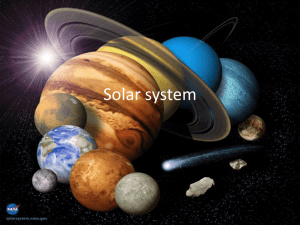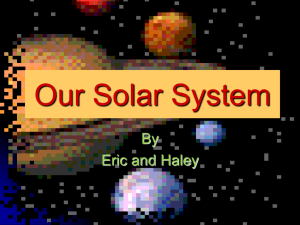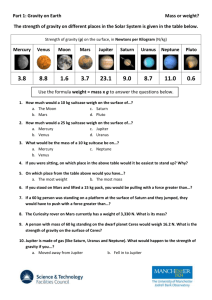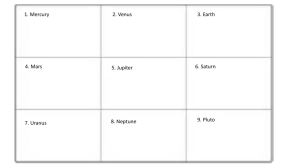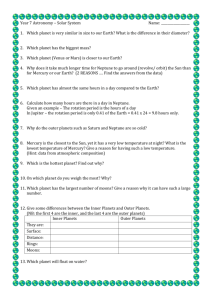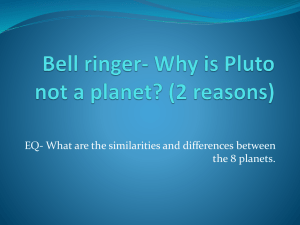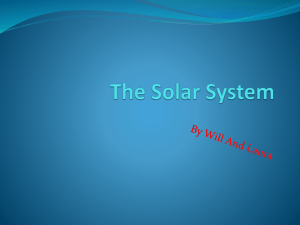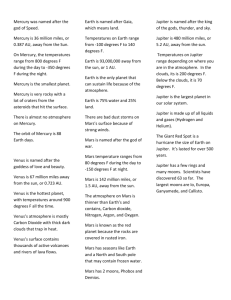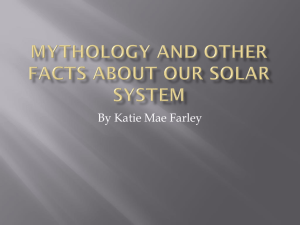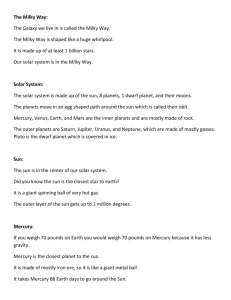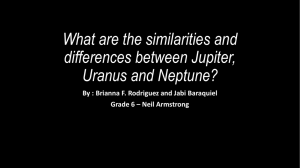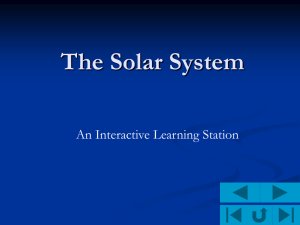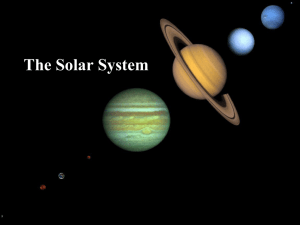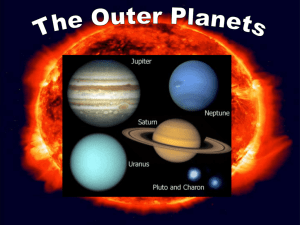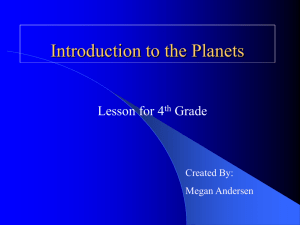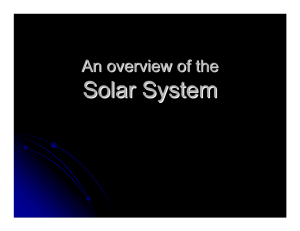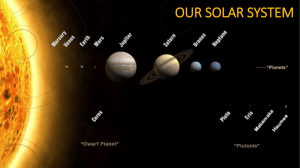PlanetCards18
advertisement
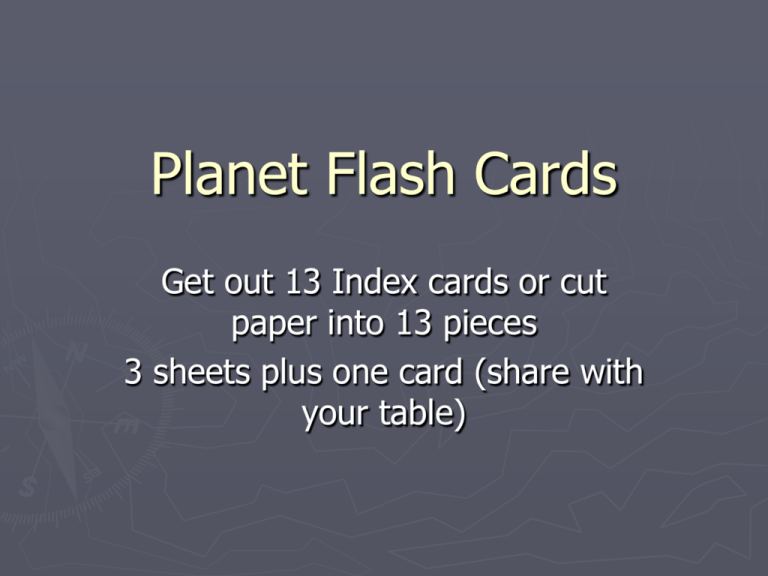
Planet Flash Cards Get out 13 Index cards or cut paper into 13 pieces 3 sheets plus one card (share with your table) The Order of the Planets ► 1. Mercury ► 2. Venus ► 3. Earth ► 4. Mars ► 5. Jupiter ► 6. Saturn ► 7. Uranus ► 8. Neptune ► 1. My ► 2. Very ► 3. Educated ► 4. Mother ► 5. Just ► 6. Served ► 7. Us ► 8. Nachos Inner Planet (Terrestrial) -Mercury -Venus -Earth -Mars Outer Planet (Gas Giant) ► Jupiter ► Saturn ► Uranus ► Neptune Retrograde Rotation (spins backwards) ► Venus ► Uranus Smaller Than Earth ► Mercury ► Venus ► Mars No Moons ► Mercury ► Venus Has a ring system ► Jupiter ► Saturn ► Uranus ► Neptune No Solid Surface ► Jupiter ► Saturn ► Uranus ► Neptune Too far away to see without a telescope. ► Uranus ► Neptune Mercury: ►Closest to the Sun ►Shortest Revolution ►Smallest planet Venus: ►Close in size to Earth ►“Earth’s Twin” ►Hottest Average Temp. ►Very thick atmosphere Compare the sizes of the Terrestrial Planets: Earth: ►1 moon (Luna) ►Has liquid water ►Has the only known life Mars: ►2 Moons ►Thin Atmosphere ►The “Red Planet” Jupiter ►Largest Planet ►Made mostly of H and He ►Most moons (about 64) ►Has a red spot (1.5 X the diameter of Earth) ►Radiates more heat than it gets from the Sun Compare the sizes of the Gas Giants Saturn: ►Made mostly of H and He ►Many moons (about 32) ►Less dense than water ►Largest rings Uranus: ►Much smaller than Jupiter and Saturn ►Tilted at a 90 degree angle ►Has many moons (27) Neptune: ►Much smaller than Jupiter and Saturn ►Many moons (13) Compare the size of the Sun to all 8 Planets! Pluto/dwarf planets: ► Considered a dwarf planet ► There are over 50 similar objects in the solar system – too many to call them all planets ► Pluto has a moon which is more than half its size ► Orbit is so elliptical that it’s path is inside Neptune’s for 20 years Asteroids ► Large rocky bodies that revolve around the sun in an orbit between Mars and Jupiter ► Thought to be left over pieces from the early formation of the solar system that were not massive enough to form into a planet meteoroid ► Small rocks that revolve around the sun in random orbits throughout the solar system ► Meteor – rock burning in our atmosphere “shooting star” ► Meteorite – a rock from space that has hit the Earth’s surface (a meteor “rite” here on the ground) comet ► Small dust ► Has object made of frozen gas, ice and a highly elliptical orbit ► Often called a “dirty snowball” ► Meteor showers happen when we travel through the debris of a comet’s dirty orbit

